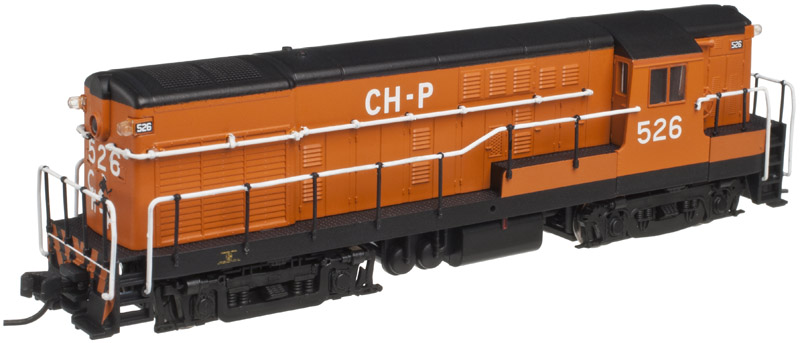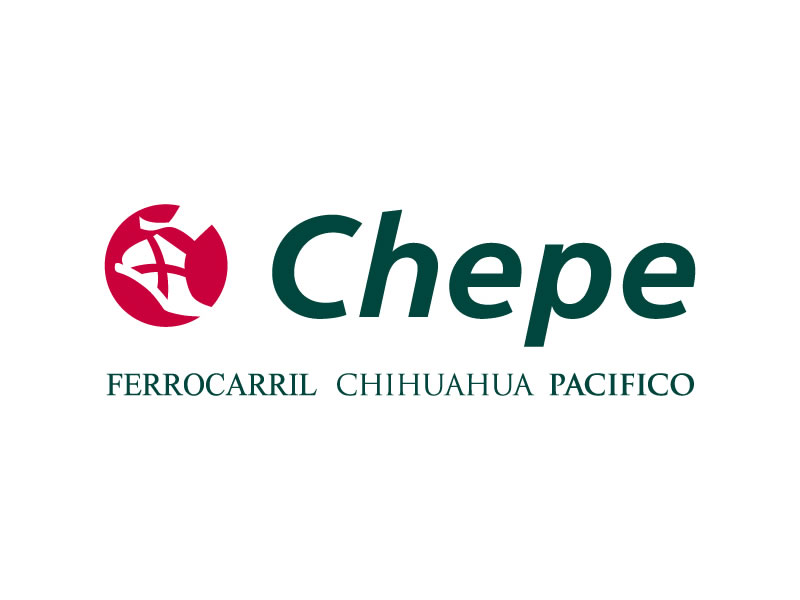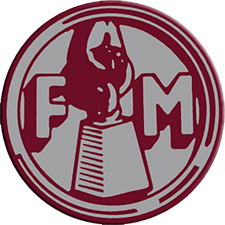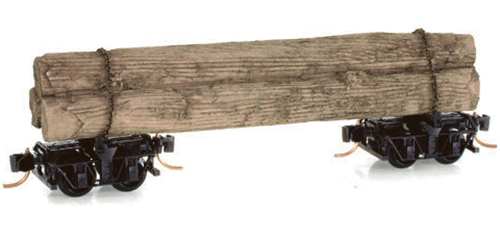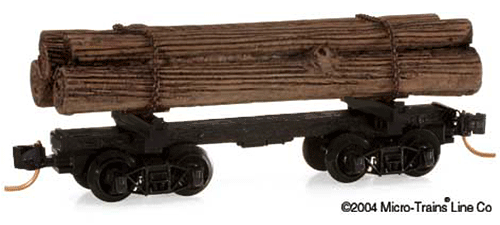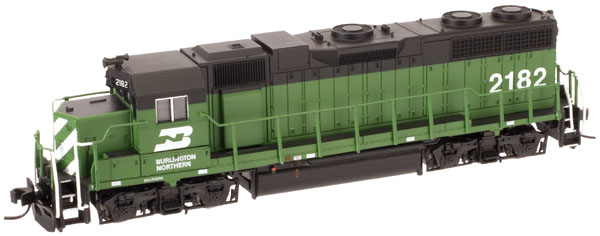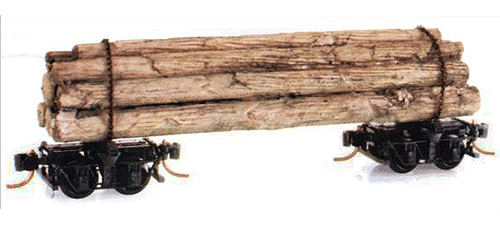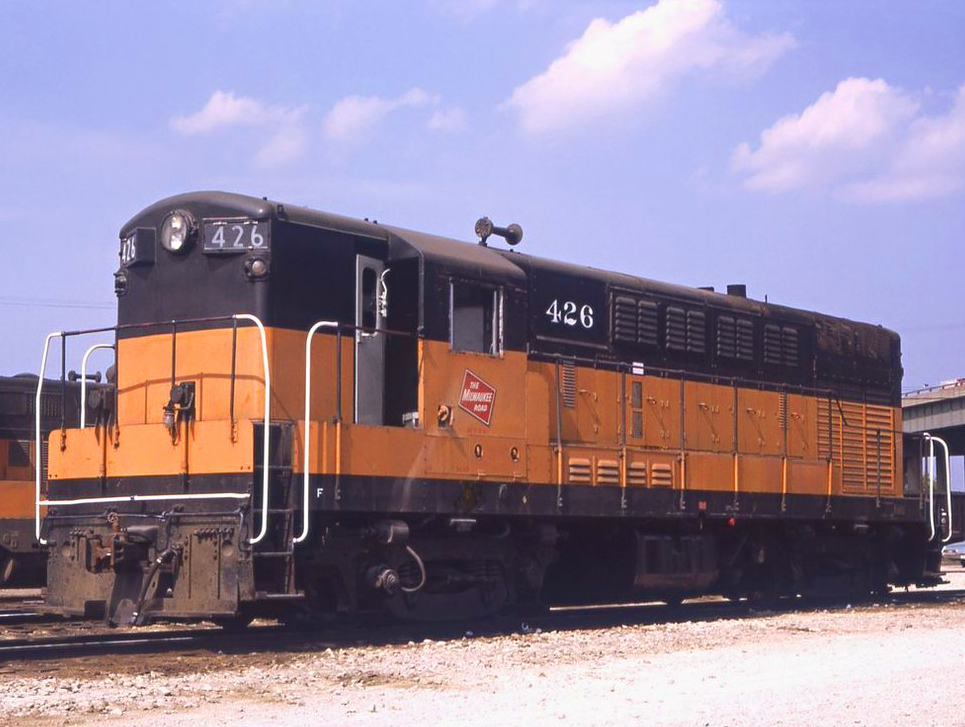Model Information: Atlas introduced the Fairbanks-Morse H-15-44 and H-16-44 models in 2003. These two body styles share the same internal mechanism. The models are standard high-quality modern mechanisms featuring split-frames, dual flywheels, and magnetic operating knuckle couplers.
They have typical high-end smooth and quiet running and can pull the expected 30+ cars on a flat surface.
These models are delivered in several variations:
- Early or Late body
- Rounded or Square windows
- Sill- or Body-mounted handrails
These models are delivered in several variations:
- Early or Late body
- Rounded or Square windows
- Sill- or Body-mounted handrails
DCC Information: These models are DCC-Friendly and accept drop-in decoders such as the Digitrax DN163A0.
The DCC install requires some work, because of the reversible green/red classification lights, that will not come with the above replacement drop-in decoder. For this reason, these models are decidedly DCC-Friendly rather than DCC-Ready. In our opinion, it is worth the extra $ to buy a decoder-equipped version (with a NCE decoder) rather than do it yourself unless you are very comfortable with a soldering iron. Brad Myers has an excellent guide (NScaleStations Blog) on how to do it if you are feeling brave.
The DCC install requires some work, because of the reversible green/red classification lights, that will not come with the above replacement drop-in decoder. For this reason, these models are decidedly DCC-Friendly rather than DCC-Ready. In our opinion, it is worth the extra $ to buy a decoder-equipped version (with a NCE decoder) rather than do it yourself unless you are very comfortable with a soldering iron. Brad Myers has an excellent guide (NScaleStations Blog) on how to do it if you are feeling brave.
Prototype History: The FM H-16-44 was a road switcher produced by Fairbanks-Morse from April 1950 – February 1963. The locomotive shared an identical platform and carbody with the predecessor Model FM H-15-44 (but not the FM H-20-44 end cab road switcher which used a different carbody and frame and a larger prime mover), and were equipped with the same eight-cylinder opposed piston engine that had been uprated to 1,600 horsepower (1,200 kW). The H-16-44 was configured in a B-B wheel arrangement, mounted atop a pair of two-axle AAR Type-B road trucks with all axles powered. In late 1950, the AAR trucks were almost exclusively replaced with the same units found on the company's "C-liner" locomotives.
The FM H-16-44 would prove the builder's most successful road-switcher of the five Fairbanks-Morse ultimately cataloged. Not only did this particularly locomotive see strong sales but the company also found a variety of buyers including foreign lines in Mexico as well as orders through its subsidiary, the Canadian Locomotive Company. 209 were built for American railroads, 58 were manufactured from March 1955 – June 1957 by the Canadian Locomotive Company for use in Canada, and 32 units were exported to Mexico.
From Wikipedia
Read more on American-Rails.com
Full F-M H-16-44 data sheet on The Diesel Shop.
The FM H-16-44 would prove the builder's most successful road-switcher of the five Fairbanks-Morse ultimately cataloged. Not only did this particularly locomotive see strong sales but the company also found a variety of buyers including foreign lines in Mexico as well as orders through its subsidiary, the Canadian Locomotive Company. 209 were built for American railroads, 58 were manufactured from March 1955 – June 1957 by the Canadian Locomotive Company for use in Canada, and 32 units were exported to Mexico.
From Wikipedia
Read more on American-Rails.com
Full F-M H-16-44 data sheet on The Diesel Shop.
Road Name History: The Ferrocarril Chihuahua al Pacífico (Chihuahua-Pacific Railway), also known as El Chepe from its reporting mark CHP, or Ferrocarril Chihuahua-Pacífico, is a major rail line in northwest Mexico, linking the city of Chihuahua, Chihuahua to the city of Los Mochis, Sinaloa and its port Topolobampo. It runs 673 km (418 mi), traversing the Copper Canyon, a rugged series of canyons that have led some to call this the most scenic railroad trip on the continent.
The private rail franchise Ferromex took over the railroad from the Mexican government in 1998.
This line, owned by the Mexican government, was the result of the 1955 merger of the Mexico North-Western Railway and the Mexican portion of the Kansas City Mexico & Orient. Ch-P ran from the port of Topolobambo (on the Gulf of California) northeast where it split. One line went east to Chihuahua and Ojinaga and the other line went north to Ciudad Juarez (just across the border from El Paso, Texas.) The line passes through scenic Copper Canyon and required 37 bridges and 86 tunnels. This portion was not completed until 1961. Ch-P was rolled into FNM in 1987 and Ferromex took over the line in 1998.
The private rail franchise Ferromex took over the railroad from the Mexican government in 1998.
This line, owned by the Mexican government, was the result of the 1955 merger of the Mexico North-Western Railway and the Mexican portion of the Kansas City Mexico & Orient. Ch-P ran from the port of Topolobambo (on the Gulf of California) northeast where it split. One line went east to Chihuahua and Ojinaga and the other line went north to Ciudad Juarez (just across the border from El Paso, Texas.) The line passes through scenic Copper Canyon and required 37 bridges and 86 tunnels. This portion was not completed until 1961. Ch-P was rolled into FNM in 1987 and Ferromex took over the line in 1998.
Brand/Importer Information: In 1924 Stephan Schaffan, Sr. founded the Atlas Tool Company in Newark, New Jersey. In 1933 his son, Stephan Schaffan, Jr., came to work for his father at the age of sixteen. Steve Jr. built model airplanes as a hobby and frequented a local hobby shop. Being an enterprising young man, he would often ask the owner if there was anything he could do to earn some extra spending money. Tired of listening to his requests, the hobby-store owner threw some model railroad track parts his way and said, "Here, see if you can improve on this".
In those days, railroad modelers had to assemble and build everything from scratch. Steve Jr. created a "switch kit" which sold so well, that the entire family worked on them in the basement at night, while doing business as usual in the machine shop during the day.
Subsequently, Steve Jr. engineered the stapling of rail to fiber track, along with inventing the first practical rail joiner and pre-assembled turnouts and flexible track. All of these products, and more, helped to popularize model railroading and assisted in the creation of a mass-market hobby. The budding entrepreneur quickly outgrew the limitations of a basement and small garage operation. Realizing they could actually make a living selling track and related products, Steve and his father had the first factory built in Hillside, New Jersey at 413 Florence Avenue in 1947. On September 30, 1949, the Atlas Tool Company was officially incorporated as a New Jersey company.
In 1985, Steve was honored posthumously for his inventions by the Model Railroad Industry Association and was inducted into the Model Railroad Industry Hall of Fame in Baltimore, Maryland. In addition, Steve was nominated and entered into the National Model Railroad Association Pioneers of Model Railroading in 1995.
In the early 1990s, the Atlas Tool Company changed its name to Atlas Model Railroad Company, Inc.
In those days, railroad modelers had to assemble and build everything from scratch. Steve Jr. created a "switch kit" which sold so well, that the entire family worked on them in the basement at night, while doing business as usual in the machine shop during the day.
Subsequently, Steve Jr. engineered the stapling of rail to fiber track, along with inventing the first practical rail joiner and pre-assembled turnouts and flexible track. All of these products, and more, helped to popularize model railroading and assisted in the creation of a mass-market hobby. The budding entrepreneur quickly outgrew the limitations of a basement and small garage operation. Realizing they could actually make a living selling track and related products, Steve and his father had the first factory built in Hillside, New Jersey at 413 Florence Avenue in 1947. On September 30, 1949, the Atlas Tool Company was officially incorporated as a New Jersey company.
In 1985, Steve was honored posthumously for his inventions by the Model Railroad Industry Association and was inducted into the Model Railroad Industry Hall of Fame in Baltimore, Maryland. In addition, Steve was nominated and entered into the National Model Railroad Association Pioneers of Model Railroading in 1995.
In the early 1990s, the Atlas Tool Company changed its name to Atlas Model Railroad Company, Inc.
Item created by: trainnut3500 on 2017-06-28 13:51:45. Last edited by Alain LM on 2021-01-01 13:43:27
If you see errors or missing data in this entry, please feel free to log in and edit it. Anyone with a Gmail account can log in instantly.
If you see errors or missing data in this entry, please feel free to log in and edit it. Anyone with a Gmail account can log in instantly.


